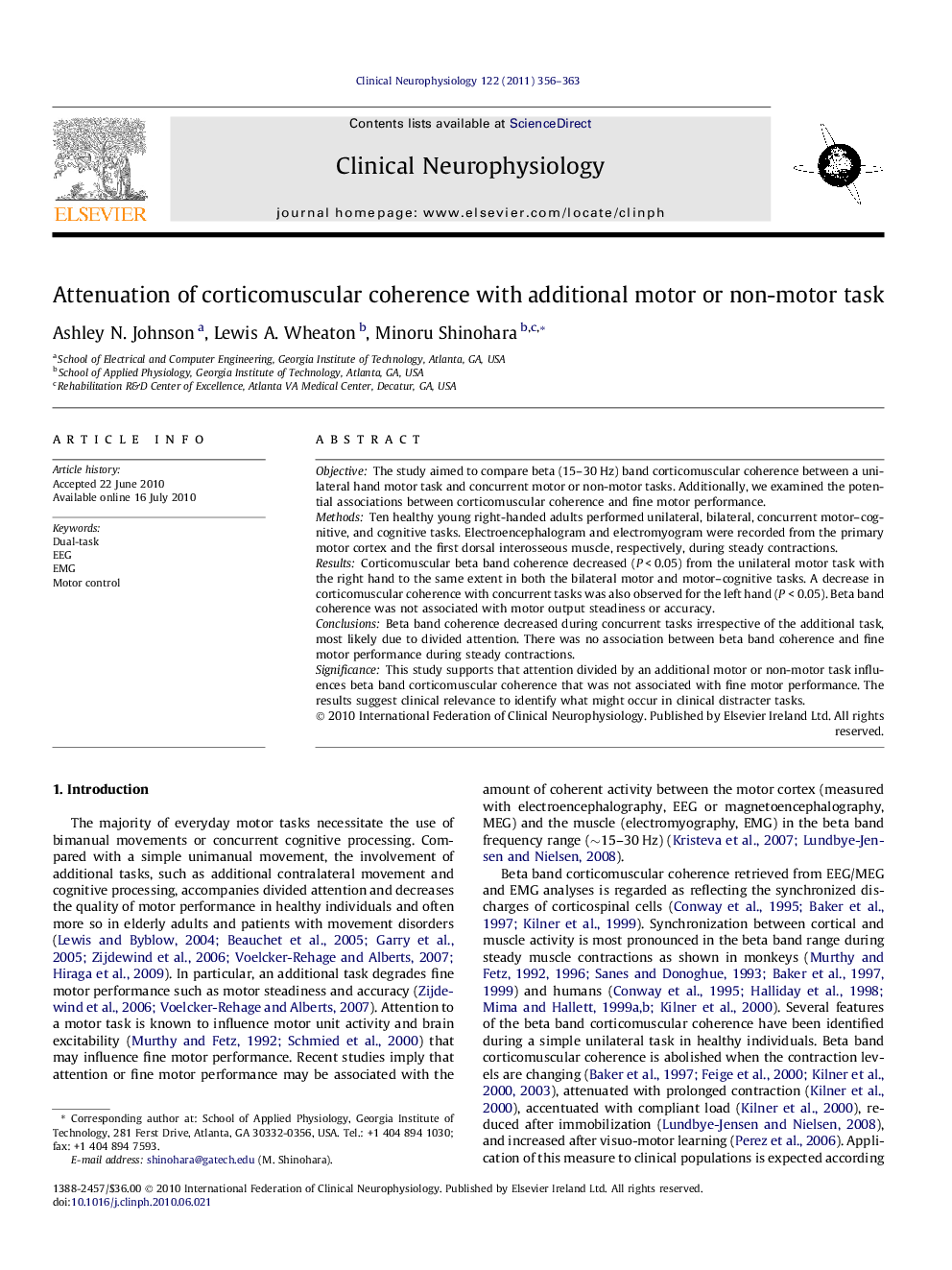| Article ID | Journal | Published Year | Pages | File Type |
|---|---|---|---|---|
| 3044987 | Clinical Neurophysiology | 2011 | 8 Pages |
ObjectiveThe study aimed to compare beta (15–30 Hz) band corticomuscular coherence between a unilateral hand motor task and concurrent motor or non-motor tasks. Additionally, we examined the potential associations between corticomuscular coherence and fine motor performance.MethodsTen healthy young right-handed adults performed unilateral, bilateral, concurrent motor–cognitive, and cognitive tasks. Electroencephalogram and electromyogram were recorded from the primary motor cortex and the first dorsal interosseous muscle, respectively, during steady contractions.ResultsCorticomuscular beta band coherence decreased (P < 0.05) from the unilateral motor task with the right hand to the same extent in both the bilateral motor and motor–cognitive tasks. A decrease in corticomuscular coherence with concurrent tasks was also observed for the left hand (P < 0.05). Beta band coherence was not associated with motor output steadiness or accuracy.ConclusionsBeta band coherence decreased during concurrent tasks irrespective of the additional task, most likely due to divided attention. There was no association between beta band coherence and fine motor performance during steady contractions.SignificanceThis study supports that attention divided by an additional motor or non-motor task influences beta band corticomuscular coherence that was not associated with fine motor performance. The results suggest clinical relevance to identify what might occur in clinical distracter tasks.
